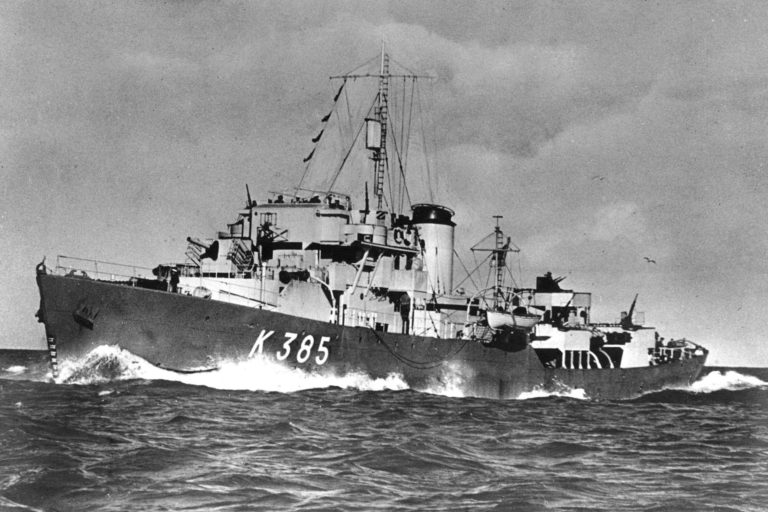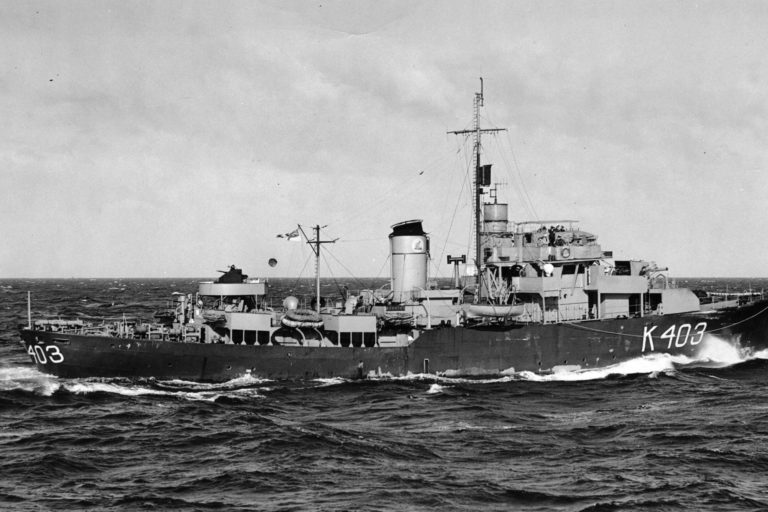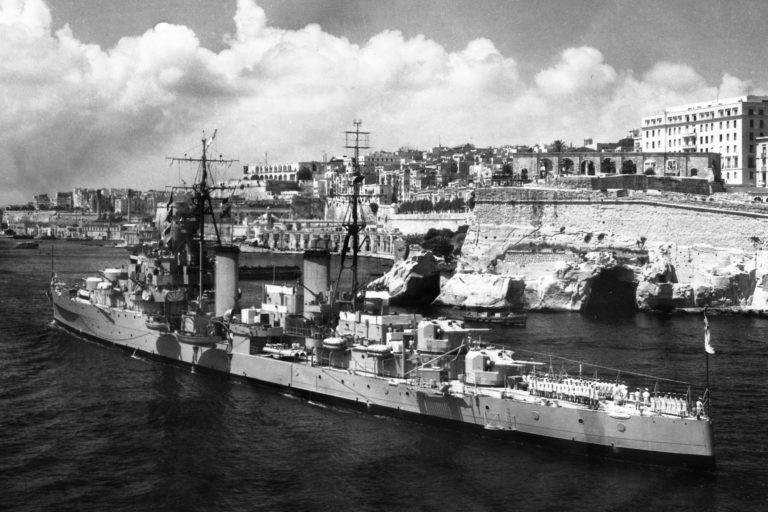![Naval Whaler at Tamaki, Motuihe 1958 [RNZN Museum ABZ 0064]](https://navymuseum.co.nz/wp-content/uploads/ABZ-0064-Naval-Whaler-at-Tamaki-Motuihe-1958-212x280.jpg)
Naval Whaler at Tamaki, Motuihe 1958 [RNZN Museum ABZ 0064]
Ship’s Boats Summary:
In 1913 HMS New Zealand carried eight ship’s boats. These included steam-powered launches and pinnaces alongside oar or sail-powered cutters and whalers. An old naval saying is that a warship is known by its boats. The Manual of Seamanship advised that “when away in a boat…you carry the credit of your ship with you, and strive to uphold it.” [1] The rating in charge of a boat was known as the Coxswain.
The use for the Ship’s Boats was to carry out any duties as required that would need a boat either to be rowed, sailed or driven by steam power in service of the warship they are assigned to. These tasks could be as follows:
- Landing shore parties of sailors and/or Royal Marines. They could be towed in ship’s boats by steam powered boats or rowed ashore.
- For use as diving boats if the ship’s hull or propellers needed to be inspected when in port in case of damage or to make repairs.
- Run mail between the ship and the shore when in port.
- Sports – intership or interfleet competitions using whalers or pinnaces ins ailing races or pulling [rowing] competitions
- Taking the ship’s company ashore for leave and returning them to the ship.
- Transferring injured or sick to shore for treatment or hospitalisation
- Transporting the Commanding Officer or other officers ashore or to other warships [usually the steam launch] for meetings and other functions.
- Transport of VIPs or officer visitors to and from the warship when in port.
- Transfer for ship’s stores to the warship – this was not a regular occurrence as usually lighters would come alongside to load provisions and fuel. But there could be items of naval use or last-minute supplies that were required.
As per Admiralty instructions, two boats were to be kept as sea boats on davits while at sea. The rest of the boats would need to be lowered by derrick. The warship would ensure that it would shield the boat from the open sea when it was launching a boat. Once the boat was almost on the water, pins would be released by the boat’s crew so it landed in the water. The boats would be manned as they were launched. VIPs and officers accessed the boats by the gangway while ratings could access the boats via ladders.
Background:
Ships carry boats or, boats go on ships not the other way round. All warships carried a number of boats for specific duties and they were given titles. There were many instructions for the proper handling of the ship’s boat that the ratings were trained in. There is no doubt that handling of a ship’s boat was a skill and poor handling could bring embarrassment to the Commanding Officer.
The rating in charge of a boat was known as the Coxswain. Men would board the ship’s boat by using the Jacob’s ladder [this was a ladder made with rope or wire with wooden boards for steps, which hangs from the ship’s lower boom to which boats may be secured and the crew may ascend][2], or man the boat as it was swung out on the davits an launched. Duties including taking officers to the Flagship or bringing the senior officers to the ship for an inspection. Boats would also bring guests from shore and return them. Senior officers and visitors would be brought alongside a set of steps that would be run out and lay parallel to the warship’s hull and reached the waterline. The ship’s boat would be brought to the bottom of the steps where there was a small platform. The visitor would then step from the boat onto the platform and then proceed up the steps to the main deck where they would be welcomed aboard. Guard Boats were boats which went around an anchored fleet or squadron to ensure a proper watch is kept on all ships. On approaching each ship it must be hailed by the watch on deck. A ship’s boat such as from HMS New Zealand would be assigned this task.[3]
Steamboats, launches, whalers, and pinnaces were stowed inboard on the boat deck and were termed “boom boats”. They would be hoisted by the boat derrick by hand or power.[4] Pinnaces could be stowed in the launch. They were secured at sea by chains. HMS New Zealand carried eight boats both steam-powered and sail/oar-powered. The type carried could depend on circumstances and what ship’s boats were available. The Indefatigable-Class battlecruisers usually carried between one to steam-powered boats and four to seven sail or oar-powered boats.[5]
As per Admiralty instructions, two boats were to be kept as sea boats on davits while at sea. The rest of the boats would need to be lowered by derrick.[6] The warship would ensure that it would shield the boat from the open sea when it was launching a boat. Once the boat was almost on the water, pins would be released by the boat’s crew so it landed in the water.[7] When the boat was to be hoisted the procedure would occur in reverse.
Uses for the Ship’s Boats
- Landing shore parties of sailors and/or Royal Marines. They could be towed in ship’s boats by steam powered boats or rowed ashore.[8]
- For use as diving boats if the ship’s hull or propellers needs to be inspected.
- They would run mail between the ship and the shore when in port.
- Sports – intership or interfleet competitions using whalers or pinnaces
- Taking the ship’s company ashore for leave and returning them to the ship.
- Taking the Commanding Officer ashore or to other warships [usually the steam launch] for meetings and other functions.
- Transfer for ship’s stores to the warship – this was not a regular occurrence as usually lighters would come alongside to load provisions and fuel. But there could be items of naval use or last-minute supplies that were required.
- To carry out any duties as required that would need a boat either to be rowed, sailed or driven by steam power in service of the warship they are assigned to.
Types of Boats:
Admiral’s Barge: A special flat-bottomed motor boat between 10-12m in length carried in a flagship for use of the Admiral [Flag Officer]. It was designated by the hull painted dark blue and the Admiral’s Flag painted on both sides of the bow. This would be carried on the warship designated as the flagship of the fleet or squadron. It would be transferred to another ship if the Admiral moved his flag to that ship. This would usually be used in harbour rather than at sea for example if the Admiral was visiting ships in his command.[9]
Barge: Another name for the Admiral’s Barge.[10]
Cheverton: A motor boat carried aboard large warships such as battlecruisers. [11]
Berthon Collapsible Boats – these could be carried for space saving purposes. They were small boats with wooden frames over which canvas was attached.[12]
Cutter: A rowboat of 8-10m in length used by warships such as battleships, battlecruisers and cruisers as a seaboat. It could also be sailed as a sloop rigged boat. There were also steam-powered cutters either 7 or 10m in length.[13]
Dinghy: A small open wooden boat of 4m in length propelled by oars or sail useful for all general purposes. About 3.5m in length, it could be used for racing as it was a standard class for the Royal Naval Sailing Association thus why it was supplied to warships. It was also used for transit between shore and vessels at moorings. [14]
Gig: A boat of 9m in length that carried six men that was rowed or fitted with twin masts if sailed.[15]
Huntress: A fast motor boat [FMB] carried in several classes of warships including battlecruisers.[16]
Launch: A large open ship’s boat 13m in length carried for harbour duties. This would normally be a powered vessel and was usually the largest of all the boats carried by a warship. Depending on the size of the warship, a number of launches could be carried. Sometimes it may be called by its old name of Longboat.[17] In the Royal Navy it was also known as the principal boat belonging to a flagship. If powered by steam it was known as the steam launch. Because of the type of boat it was it not be rowed or sailed. It was also the most tiddly of the ship’s boats as it was often used for formal occasions. In RN use, Harbour Launches were large broad-beamed steamboats used in dockyard ports.[18]
Lifeboat: The name given to a warship’s sea boat when it is used for lifesaving.[19]
Pacific: A motor boat used for training purposes.[20]
Picket Boat: A steam boat used to protect a warship at night from surprise attack. [21]
Pinnace: A small two masted boat of 9-12m that could be sailed or rowed and was used to carry despatches between warships or general purposes.[22] Some were fitted with steam engines around 1910-1919. Steam Pinnaces could range in size from 12-17m. [23]
Pulling Boat: A ship’s boat propelled by oars such as a dinghy, pinnace or whaler.[24]
Seaboat: A ship’s boat which when the warship is at sea is equipped and ready for use at the davits.[25] These boats are designed for good seakeeping and can handle being lowered into the water. Davits are steel supports in pairs for hoisting, carrying, and launching ship’s boats.[26] The team seaboat can be applied to most ship’s boats interchangeably. Two seaboats, one port and one starboard were kept ready when HMS New Zealand was at sea and fitted with gear and rigging to launch them quickly if needed in case they needed to recover a man overboard or another purpose.[27]
Whaler: The Montagu Whaler was a double-ended clinker-built ship’s boat 8m in length[28] that could be sailed or rowed. The design followed that of whaleboats used in the 19th century and was in use by the RNZN until 1990.[29] The design carried on HMS New Zealand had been developed around 1900 by Admiral Montagu. For most of their time in service, the whaler was simply a small boat for specialised tasks. Whalers were also used for recreation, both sailing and pulling. Ships and fleets would often have competitions and a good whaler’s crew was a sign of a good ship.
[1] Admiralty, Manual of Seamanship Vol. I 1908, Revised ed., London: HMSO, 1917, p. 226.
[2] John Hard, Royal Navy Language, Lewes: The Book Guild, 1991, p. 216.
[3] ibid., p. 215.
[4] Admiralty, Manual of Seamanship Vol. I 1908, Revised ed., London: HMSO, 1917, p. 205.
[5] Lawrence Burr, British Battlecruisers 1914-18, Oxford: Osprey Publishing, 2006, p. 25. The ship model in the Museum’s collection has four steam boats and four rowboats.
[6] Ian Johnston, Clydebank Battlecruisers: Forgotten Photographs from John Brown’s Shipyard, Annapolis: Naval Institute Press, 2011, pp. 28-29.
[7] Admiralty, Manual of Seamanship Vol. I 1908, Revised ed., London: HMSO, 1917, p. 224.
[8] For example, at the landings at Gallipoli, small ship’s steam-powered boats towed the Anzacs to a point off the beach from where they rowed in.
[9] John Hard, Royal Navy Language, Lewes: The Book Guild, 1991, p. 210. In 1919 HMS New Zealand carried an Admiral’s Barge as Admiral of the Fleet Jellicoe was on board. See also Admiralty, Manual of Seamanship Vol. I 1908, Revised ed., London: HMSO, 1917, p. 261.
[10] ibid., p. 210.
[11] ibid., p. 213.
[12] Admiralty, Manual of Seamanship Vol. I 1908, Revised ed., London: HMSO, 1917, p. 202.
[13] A. Ansted, A Dictionary of Sea Terms, Glasgow: James Brown & Son, 1919, p. 65. See also Joseph Palmer, Jane’s Dictionary of Naval Terms, London: Macdonald and Jane’s, 1975, p. 55 and Admiralty, Manual of Seamanship Vol. I 1908, Revised ed., London: HMSO, 1917, pp. 261-262.
[14] John Hard, Royal Navy Language, Lewes: The Book Guild, 1991, p. 214. See also A. Ansted, A Dictionary of Sea Terms, Glasgow: James Brown & Son, 1919, p. 69, Joseph Palmer, Jane’s Dictionary of Naval Terms, London: Macdonald and Jane’s, 1975, p. 63 and Admiralty, Manual of Seamanship Vol. I 1908, Revised ed., London: HMSO, 1917, p. 262.
[15] Joseph Palmer, Jane’s Dictionary of Naval Terms, London: Macdonald and Jane’s, 1975, p. 94. See also Admiralty, Manual of Seamanship Vol. I 1908, Revised ed., London: HMSO, 1917, p. 262.
[16] John Hard, Royal Navy Language, Lewes: The Book Guild, 1991, p. 216.
[17] ibid. See also Admiralty, Manual of Seamanship Vol. I 1908, Revised ed., London: HMSO, 1917, pp. 250-251, 261.
[18] A. Ansted, A Dictionary of Sea Terms, Glasgow: James Brown & Son, 1919, p. 151. See also Joseph Palmer, Jane’s Dictionary of Naval Terms, London: Macdonald and Jane’s, 1975, p. 129.
[19] John Hard, Royal Navy Language, Lewes: The Book Guild, 1991, p. 217. See also Joseph Palmer, Jane’s Dictionary of Naval Terms, London: Macdonald and Jane’s, 1975, p. 133.
[20] ibid.
[21] Joseph Palmer, Jane’s Dictionary of Naval Terms, London: Macdonald and Jane’s, 1975, p. 177.
[22] ibid., p. 179. See also A. Ansted, A Dictionary of Sea Terms, Glasgow: James Brown & Son, 1919, p. 201.
[23] A. Ansted, A Dictionary of Sea Terms, Glasgow: James Brown & Son, 1919, p. 201. See also Admiralty, Manual of Seamanship Vol. I 1908, Revised ed., London: HMSO, 1917, pp. 250-251, 261.
[24] John Hard, Royal Navy Language, Lewes: The Book Guild, 1991, p. 218. See also Joseph Palmer, Jane’s Dictionary of Naval Terms, London: Macdonald and Jane’s, 1975, p. 188.
[25] ibid., p. 219. See also Joseph Palmer, Jane’s Dictionary of Naval Terms, London: Macdonald and Jane’s, 1975, p. 214.
[26] John Hard, Royal Navy Language, Lewes: The Book Guild, 1991, p. 214.
[27] Admiralty, Manual of Seamanship Vol. I 1908, Revised ed., London: HMSO, 1917, p. 223.
[28] ibid., p. 201.
[29] John Hard, Royal Navy Language, Lewes: The Book Guild, 1991, p. 220. See also Joseph Palmer, Jane’s Dictionary of Naval Terms, London: Macdonald and Jane’s, 1975, p. 289. They were replaced by the RHIBs.

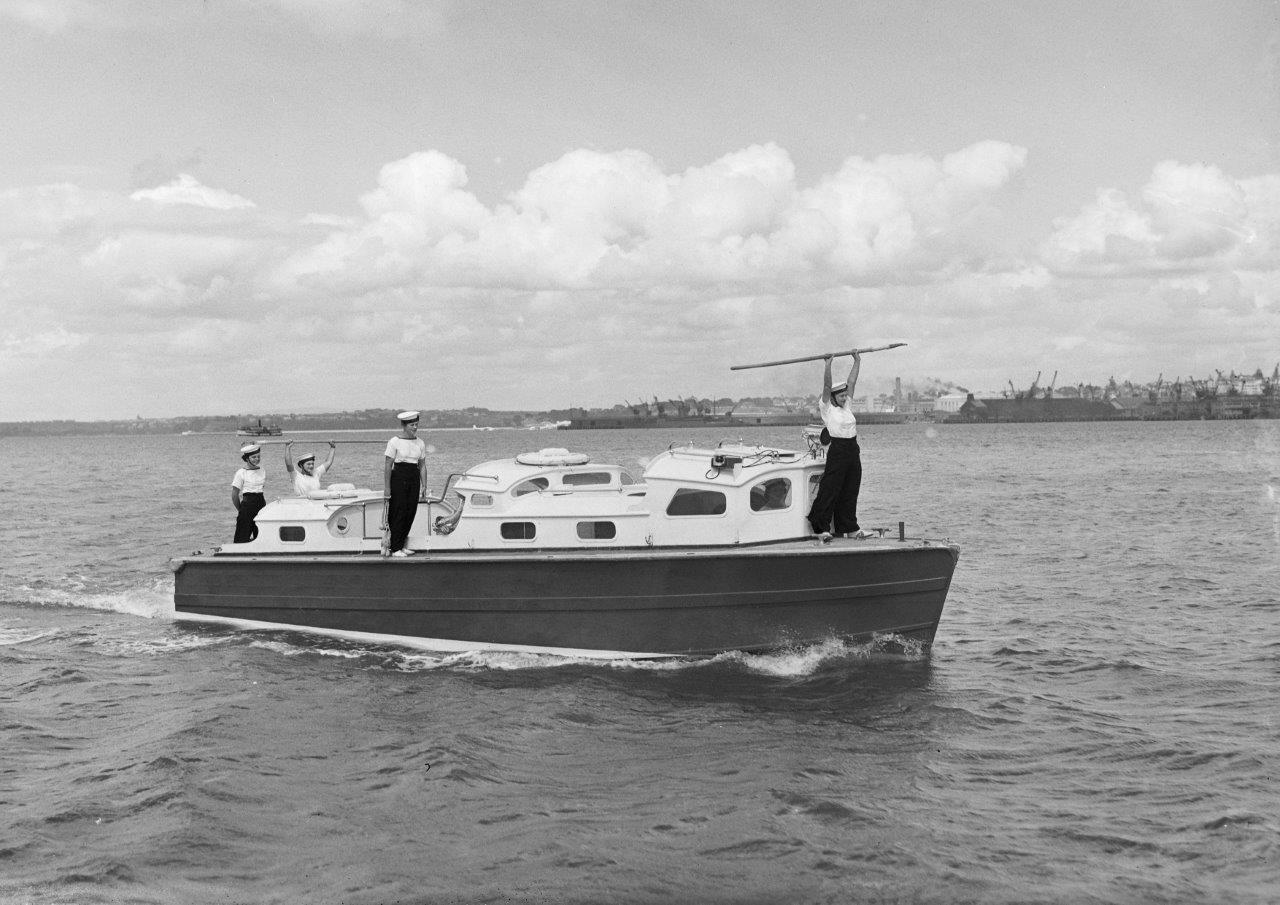




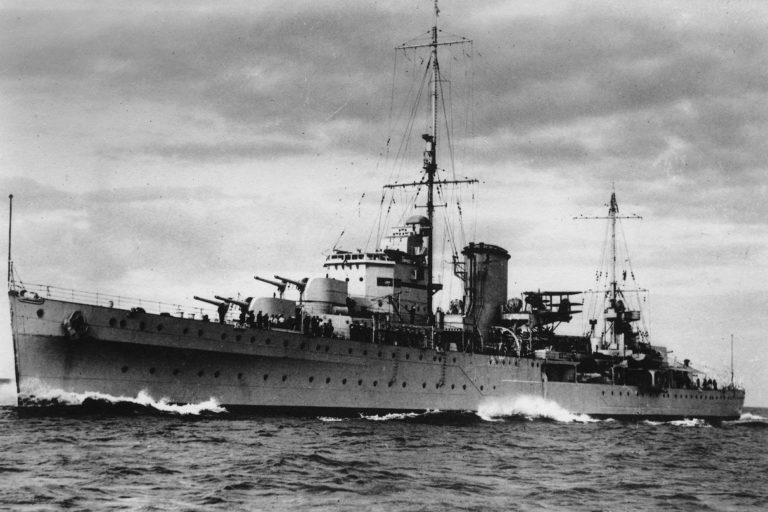
![Amokura Training Ship Amokura [formerly HMS Sparrow]](https://navymuseum.co.nz/wp-content/uploads/amokura.jpg)
